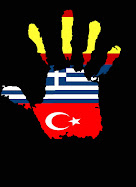Tampoco podían faltar los actos religiosos como la bendición del pan y la visita a la residencia geriátrica El Catí, para hacer partícipes de la fiesta a nuestros mayores. Pero el acto de mayor envergadura fue el de la Proclamación de Capitanías 2009, un ejemplo de fusión entre religiosidad y fiestas profanas, que desde hace dos años se viene celebrando en el interior del templo de Santa Ana presidido por la imagen de San Antón. Todo un espectáculo de luces, música y sonido, lleno de emotividad tanto para los protagonistas, los nuevos embajadores, capitanes y abanderadas de las comparsas, como para todo el público asistente.
Las celebraciones populares, cuyo origen en la mayoría de los casos es de carácter religioso, son un punto de encuentro que unifica voluntades, lima asperezas y sirve para afianzar el sentimiento de pertenencia a la colectividad y para rearfirmar las raíces. En días como éstos, los ciudadanos de Elda despliegan su hospitalidad y desde su atalaya levantina lanzan una salva de arcabucería que a nosotros, los que formamos la Red de Tolerancia, nos gustaría que fuera en honor de los que allá, al otro lado del Mediterráneo, comparten nuestro deseo de crear un mundo mejor.
In a different part of this blog we already mentioned Saint Anthony, the hermit. Now we do it again to talk about the yearly celebrations of Moors & Christians at a time half way between the June celebrations of the previous year and the current year ones. It is so because on January the 17th we celebrate the day dedicated in the calendar to the Patron Saint of these festivities. In 2009 these events have taken place in three consecutive weekends in January. The people from Elda have participated in several parades, popular dances, live band music circuits, a pilgrimage to the hermitage, traditional instruments playing, ancient infant games, fireworks and even pets had a place in a mobile farm located at the entrance to Saint Anthony`s to symbolize his caring protection of animals.
There were also some religious happenings such as the blessing of bread and the visit to the Old People`s Home “El Catí” to make our elderly ones participants, as well. However, the most relevant moment was the Proclamation of the Comparsas` Leaders for 2009 in a show which combined religion and pagan rituals. It took place in Saint Ann`s Church presided by Saint Anthony`s image. The performance included a sophisticated technical display of sound and lights which enhanced the important moment for the starring figures: the new leaders.
. Popular celebrations, whose origin is religious in most cases, are meeting points which unify people`s wills, strengthen the feeling of belonging to a certain group and roots people to their home towns. These days, Elda and its citizens show their hospitality and from their Mediterranean Tower shoot their guns, which we, the IES Monastil people dedicate to those on the other side of the Mediterranean, our Turk and Greek friends, sharing our prospect of a better world.













